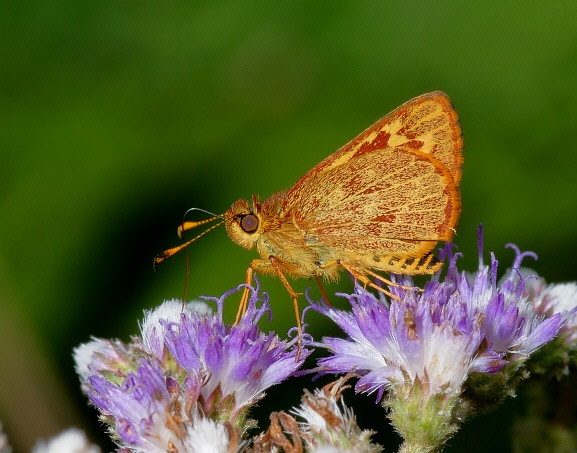
Introduction
There are at least 1038 known species of of Grass Skippers ( Hesperiinae ) found in the neotropical region.
The genus Lento comprises of 19 described species found variously from Mexico to Argentina.
Lento ludo is distributed from Ecuador to Bolivia.
Habitats
This species was photographed by the roadside, at an altitude of about 1700m in the cloudforests of the eastern Andes in southern Peru.
Lifecycle
Unknown, however the lifecycle will probably be similar to that of other Hesperiine skippers : The eggs are typically laid on the sheaths or blades of grasses. The larvae almost certainly shelter by day within a silked tube at the base of grasses, and emerge at dusk to feed on a variety of grasses ( most Hesperiine larvae progress from finer grasses to coarser species as they mature ). They are likely to be greenish in colour with fine longitudinal lines and will possess caudal prongs – a pair of short anal projections that are used to flick the droppings clear of the feeding site.
Adult behaviour
No observations other than that the butterfly was active at mid-morning in hazy sunlight, and was found nectaring at the unidentified flowers in the photograph above.
